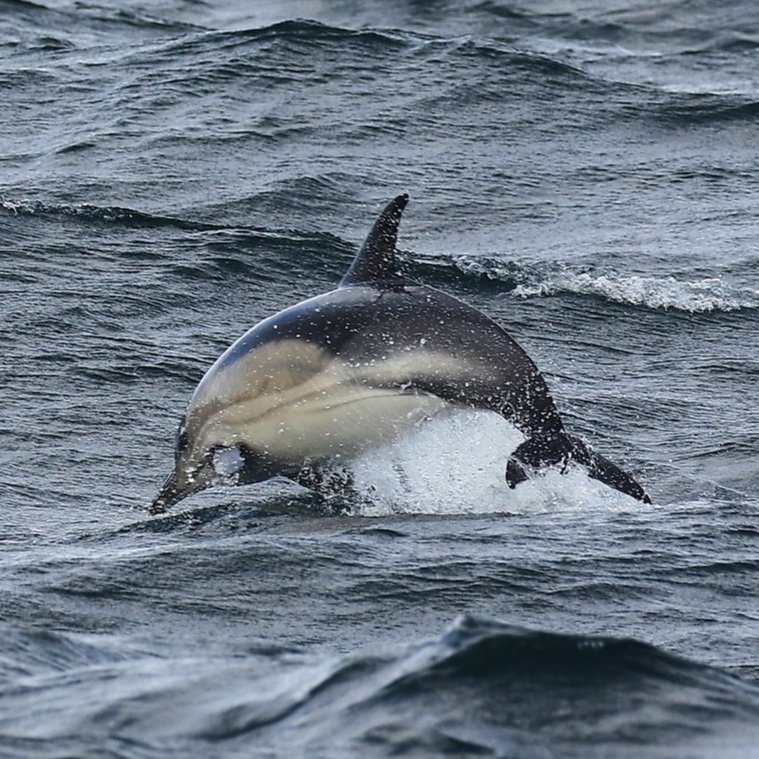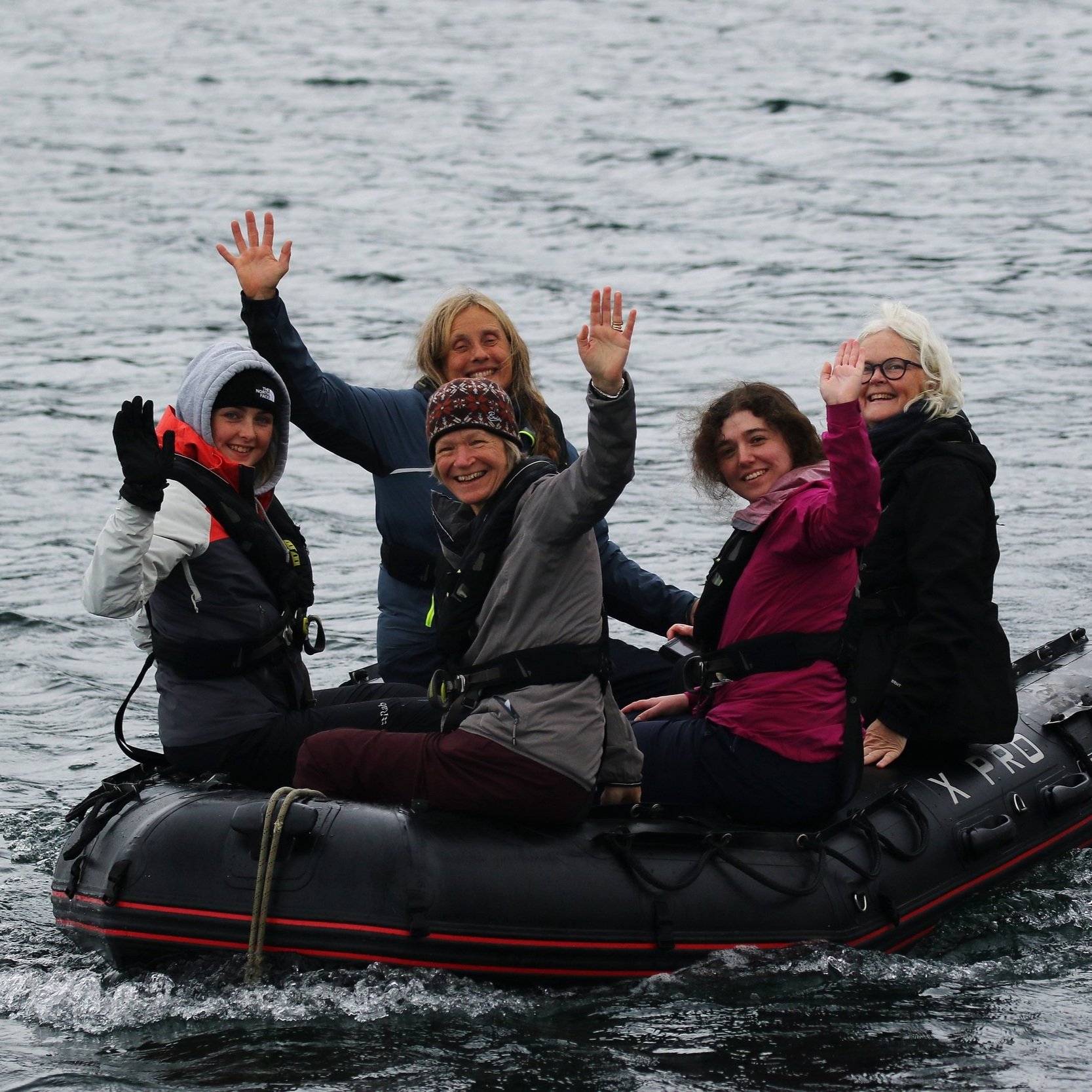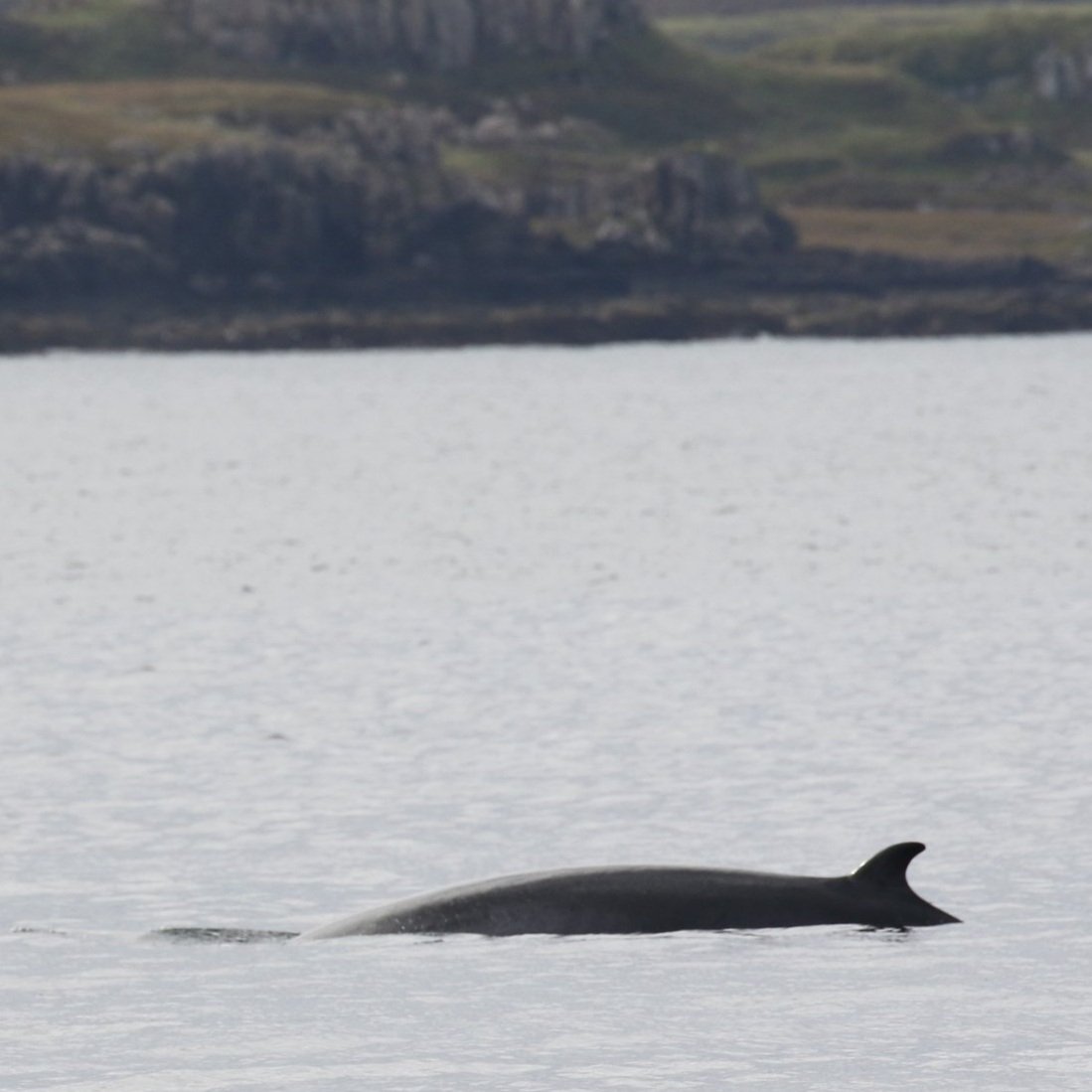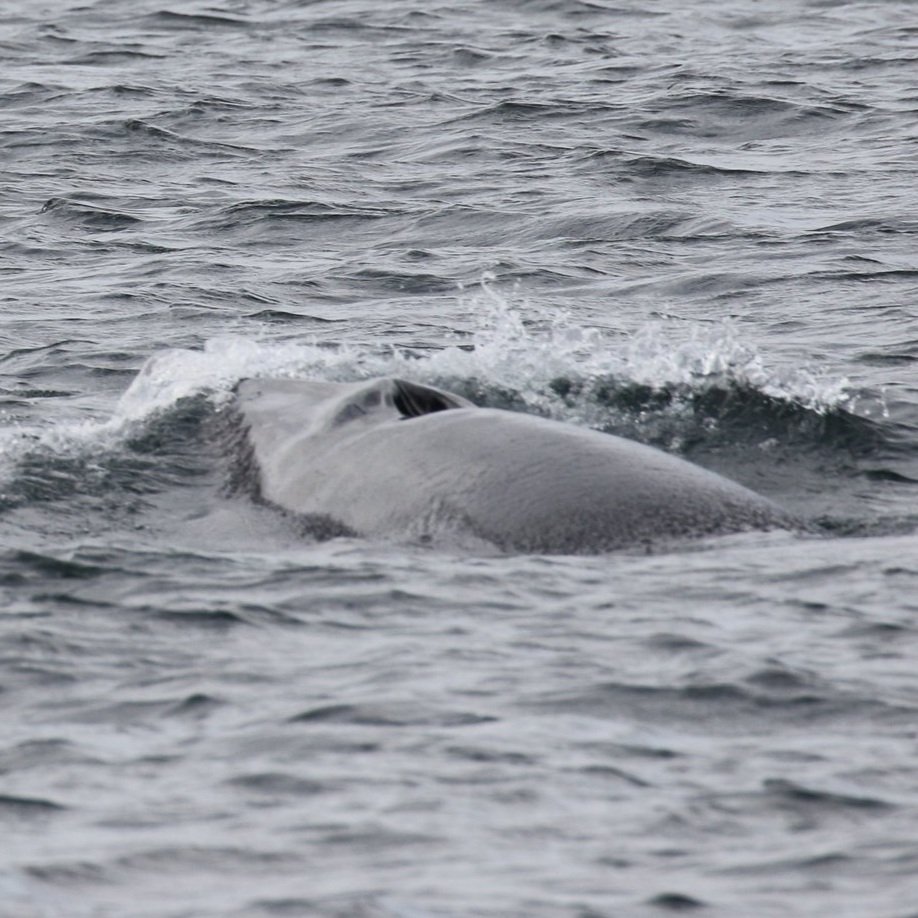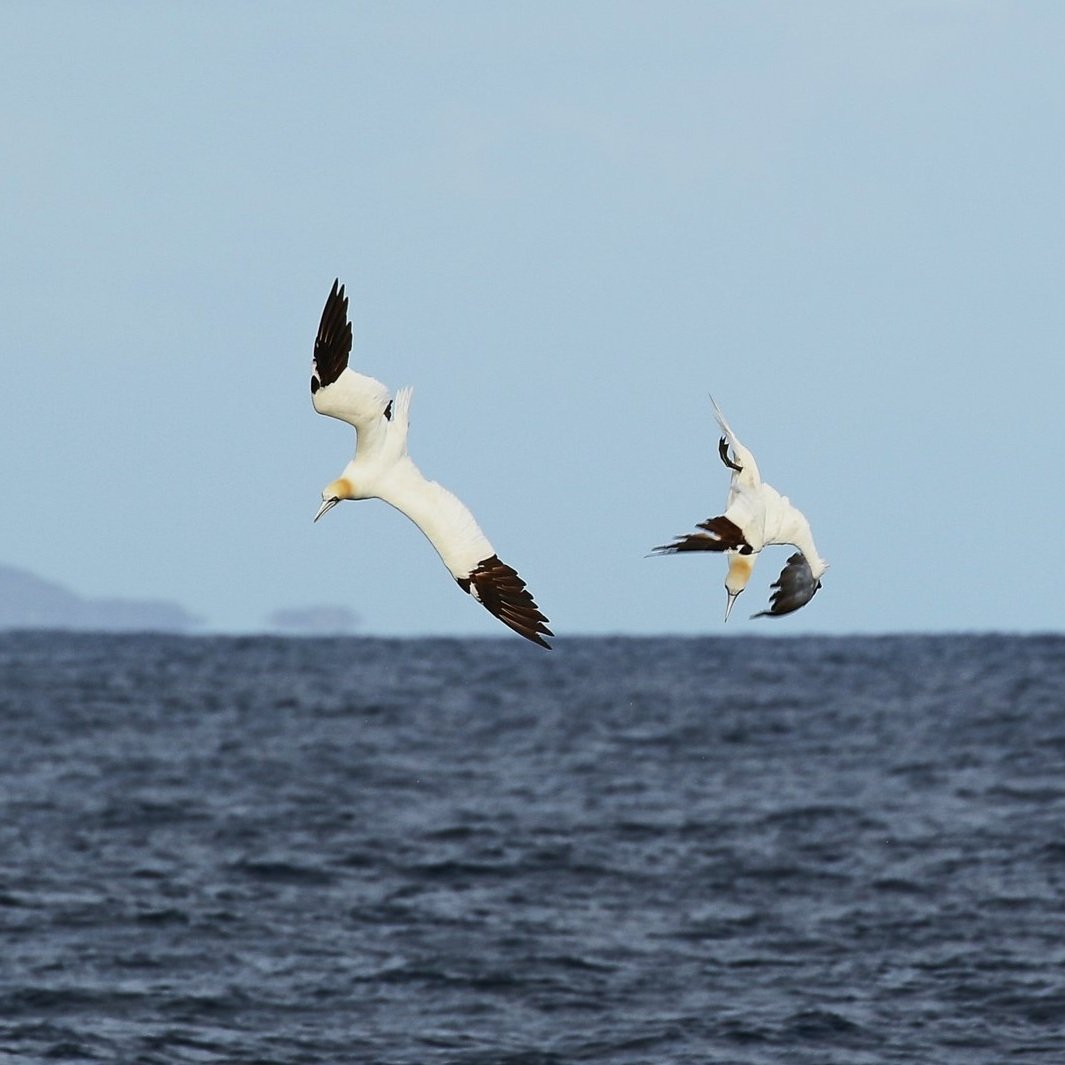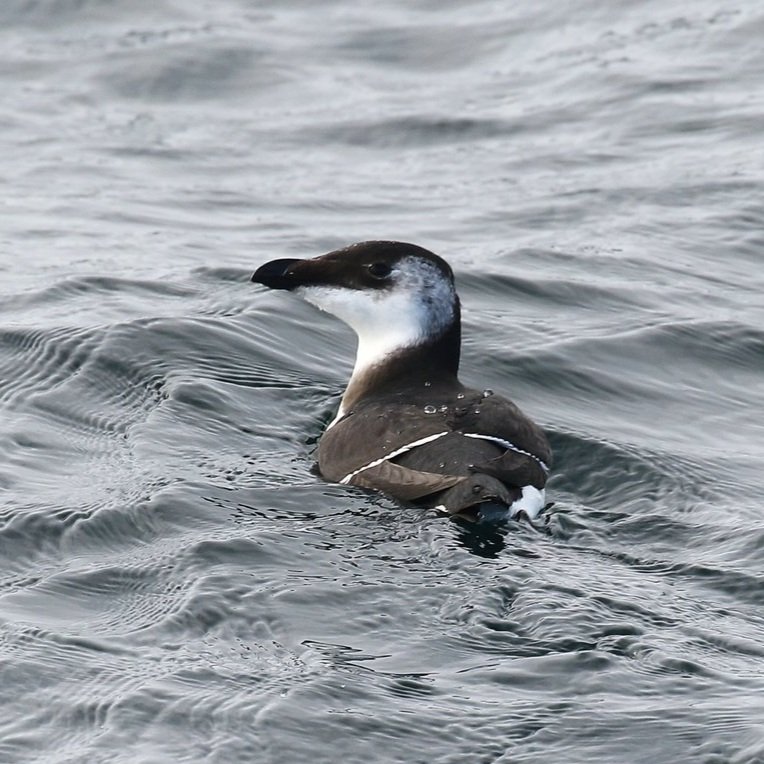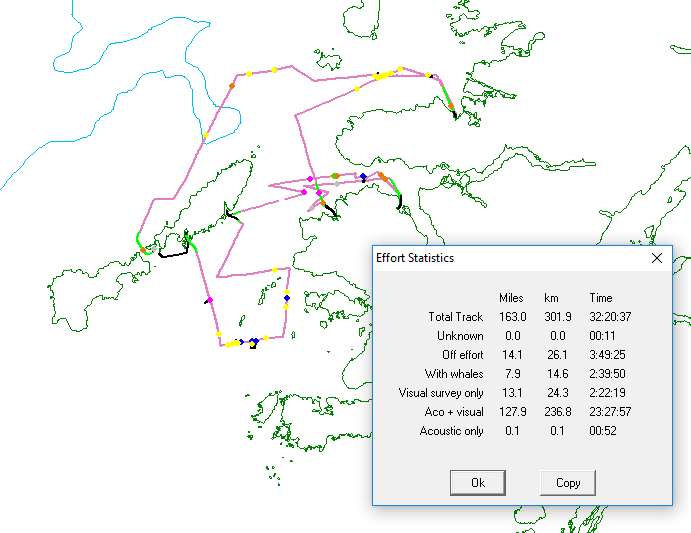Feeding frenzies to the west of Mull mark the fifteenth expedition
OUR FIFTHTEENTH RESEARCH EXPEDITION OF 2022 LEFT TOBERMORY FOR A WEEK MONITORING THE WATERS OFF THE WEST COAST OF SCOTLAND. A CHANGEABLE WEEK OF WEATHER CREATED SOME CHALLANGES FOR THOSE ON BOARD SILURIAN - OUR RESEARCH VESSEL - BUT THE TEAM WAS REWARDED WITH SOME MEMORABLE ENCOUNTERS. HERE CRAIG MACKIE, SCIENCE OFFICER ON BOARD, RECALLS THE EXPEDITION…
We welcomed our volunteers: Alison, Melissa, Amy, Joanna, Anne and Ellie onboard for the fifteenth expedition of the season, spending the first evening and morning going over species ID and survey training. After a hearty last lunch at port, we set off out of the safety of the harbour and into windy and wet seas - giving the volunteers an initiation into the conditions we are occasionally faced with in the Hebrides. The conditions made spotting animals difficult and, after venturing out into the deeper waters between Mull and Coll, a decision was made to retreat into Loch Cuan (NW Mull) to set us up for passage the next day.
The next morning started with some excitement as a sea eagle passed by Silurian during breakfast, harassing a gull over the bay where we had taken shelter the night before. With strong winds persisting from the south, we headed north and around Ardnamurchan point, where the land would offer us some protection and allow us to continue gathering data. This proved to be a good decision, as we passed Bo Fascadale - a shallow underwater bank which provides great feeding grounds for marine creatures - we were met by several large pods of common dolphins which would join us on the bow for short periods, before heading off to continue foraging. We continued eastwards before turning into Kentra bay - a beautiful stretch of sandy beach to the north of the Ardnamurchan peninsula - where the rain eased off, providing the volunteers with their first opportunity to explore some of the amazing landscapes we are lucky to pass during our surveys.
Day three and the weather began to relent slightly…at least for the morning. We headed west hoping to get up to Canna and it wasn’t long before we caught our first glimpse of a minke whale, sadly it was only a glimpse as it disappeared, despite the best efforts of the volunteers and crew to spot it. Continuing along our route we had more common dolphins join us for short parts of the transect. A drastic change in wind strength and direction meant a quick decision had to be made as to our destination for the evening. It was decided that Canna was going to be a tricky run against wind and tide, so a plan was made to head southwards instead, over Hawes bank and down the west side of Coll. One pod of common dolphins and a few scattered grey seals were spotted as the swell began to grow. We pressed on south, through the Gunna Sound. The plan was to anchor there for the night, but a quick check showed it would be a little bit bumpy and uncomfortable so we headed up the coast a little to the shelter of Loch Breachacha, on the south side of Coll.
The next day, there was discussion about what weather would lie in store and where that would allow us to survey, with plans to attempt to gather data from south of Tiree - an area we hadn’t covered this summer field season. However the poor forecast resulted in making course for the Treshnish Isles, which lie to the west of Mull. We made our way across the sea and, around halfway to the Dutchman’s Cap, a large splash was seen a few hundred metres from the boat. Although the beast that made the splash was never seen again spirits were raised by the knowledge that there were things to be spotted in the area. As we came south of the cap, we were greeted by a flurry of activity with gannets, sooty shearwater and kittiwakes all feeding in a frenzy on the surface and it wasn’t long before a minke whale was spotted by one of our volunteers. This was a particularly exciting moment for Jess - a summer outreach volunteer with the Trust and this expedition’s fourth crew - as it was her first ever minke and it was something she had been very keen to see. We delved on into the Treshnish Isles as the feeding birds continued to surround the boat, soon joined by groups of common dolphins. We watched the gannets diving into the sea for a while and they were soon joined by a large eruption of water from beneath causing the birds on the surface to scatter in a panicked fashion. A lunge feeding minke! Soon joined by another whale, the pair fed around the boat - at one point lunging so close we could feel the impact of the waves it created.
We spent a little time with the whales before moving on. With the waters being as active as they were another two minkes were soon spotted feeding a few hundred metres from the boat as we drew near to Staffa.
After an enjoyable series of encounters, spirits were high and we headed north towards Lunga, where we were once again joined by a large group of common dolphins - around 60 in number - taking it in turns to surf on Silurian’s bow waves and leaping alongside.
We left the Treshnish Isles behind and turned back towards Coll, heading for Arinigour - the main port on the island, where we would anchor for our last night. The volunteers headed off to explore the mainland and took the opportunity to visit the facilities offered in the town whilst also enjoying some of the amazing views over the harbour.
It was the last day and it was time to head back to Tobermory for the end of the expedition. As always seem to be the way on rougher trips, the weather finally decided to calm down giving way for flat seas and sunny skies. This provided some of the volunteers the opportunity to get up into the crows nest, where they could enjoy fantastic views of the Small Isles, Mull and Ardnamurchan.
We headed into the sound of Mull where we were lucky to see two harbour porpoise, the first of the trip! Furthermore, just as we thought it was all coming to an end, one last minke whale popped up in front of Tobermory lighthouse - a fantastic little welcome home gift and an amazing way to finish up the expedition.
Across the 7 days, the group surveyed 163 nautical miles of the Hebridean waters encountering 4 different species of marine mammal.
A big thank you to volunteers Alison, Melissa, Anne, Amy, Joanna and Ellie. Your efforts have helped contribute towards protecting marine mammals within the Hebrides.
THANKS ALSO TO NATURESCOT FOR SUPPORTING THE DATA COLLECTION ON BOARD SILURIAN.



